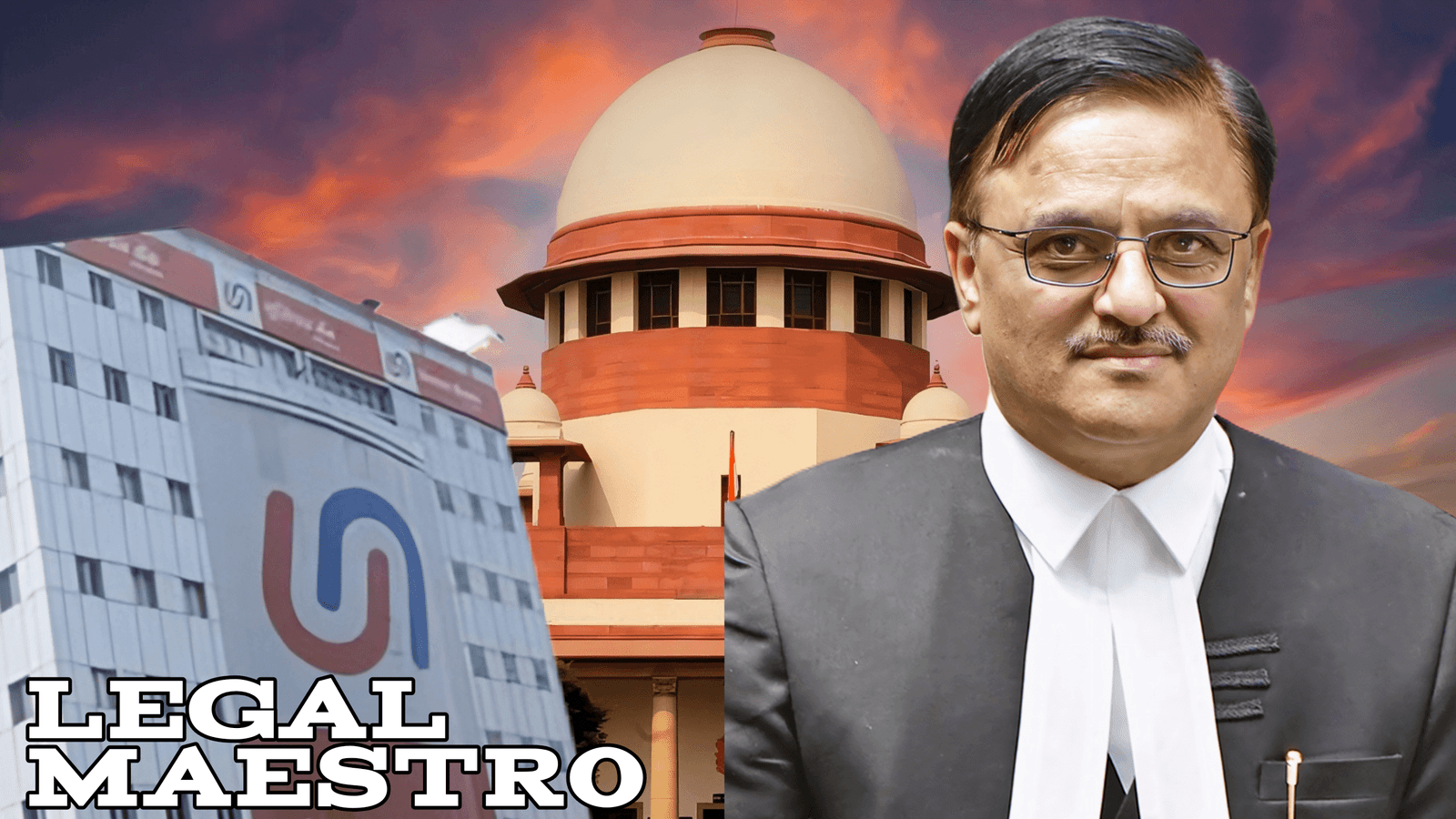
The Supreme Court of India, in its recent decision in the case of A.M. Kulshrestha v. Union Bank of India and Ors. (Civil Appeal No. 7039 of 2025), addressed the issue of whether or not disciplinary proceedings initiated against a senior bank official are legal.
More specifically, the court investigated whether or not it is necessary to consult with the Central Vigilance Commission (CVC) prior to issuing a charge sheet in cases that are related to vigilance.
This historic case provides an interpretation of Regulation 19 of the Union Bank of India Officer Employees’ (Discipline and Appeal) Regulations, 1976. It also puts light on the importance of procedural fairness, particularly when it comes to the termination of an employee’s employment.
For any queries or to publish an article or post or advertisement on our platform, do call at +91 6377460764 or email us at contact@legalmaestros.com.
Historical Context and Facts
Over the course of his 34 years of service at the Union Bank of India, A.M. Kulshrestha eventually worked his way up to the post of Deputy General Manager in February of 2016. It was planned that he will finish his career on June 30th, 2019. In spite of this, on the 21st of August 2018, he was suspended due to suspicions of irregularities in the sanctioning of loan proposals that occurred under his previous position as Regional Head, Meerut.
According to the allegations made by the bank, he had granted enormous credit limits to newly registered businesses without conducting adequate due diligence.
In the months of January and March of 2019, he was served with two summons to do a show-cause.
Kulshrestha went to the Allahabad High Court, alleging that the disciplinary procedure had not progressed despite the fact that he was getting close to the conclusion of his service. He was dissatisfied with the extended suspension and the lack of clarity on the processes.
During the course of these proceedings, the bank admitted that the case had a vigilance angle and that the subject had been referred to the CVC in accordance with Regulation 19 of the 1976 Regulations.
In spite of this, the bank served Kulshrestha with a charge sheet that was dated the 10th of June 2019 on the 18th of June 2019, which was twelve days before his retirement. They did this without waiting for recommendation from the CVC.
The Function of the CVC in Relation to Regulation 19
The interpretation of Regulation 19, which states the following, was the center of the controversy.
In the event that it is deemed necessary, the Central Vigilance Commission will be consulted by the Bank in regard to any and all disciplinary proceedings that involve vigilance.
When it comes to vigilance-related disciplinary cases, the appellant stated that the usage of the word “shall” indicates a mandatory obligation for consultation with the CVC prior to starting any action.
This view was backed by a number of circulars that were released by the CVC. Circulars that were issued on the 28th of September 2000, the 15th of April 2004, and the 27th of April 2015 included circulars that reinforced the two-stage consultation procedure. The first step of consultation occurred before the charge sheet was issued, and the second stage occurred after the inquiry was completed.
Results of the High Court’s Research
The challenge that was brought forward by the appellant was initially rejected by the learned Single Judge and then by the Division Bench of the Allahabad High Court.
They came to the conclusion that it was not necessary to seek the advice of the CVC prior to publishing a charge sheet, and they urged the appellant to involve themselves in the investigation. The Supreme Court was required to hear an appeal as a result of this decision.
Important Concerns in the Legal System
Regarding the question of whether or not Regulation 19 requires consultation with the CVC prior to the issuance of a charge sheet in cases about vigilance.
The question at hand is whether the disciplinary proceedings were deemed illegitimate because the bank did not wait for the guidance of the CVC before releasing the charge sheet.
There was a question over whether or not the lengthy suspension and disciplinary actions that were launched at the end of service were legally enforceable.
Observations Made by the Supreme Court
With regard to the question of whether Regulation 19 was mandatory or directory, the Supreme Court did not consider it essential to make a general ruling. Instead, it concentrated on the circumstances of this case, including the bank’s own admission that it had considered contact with the CVC to be required.
The bank had made an explicit request for the first-stage advice from the CVC, and it had told the High Court that a charge sheet would not be issued until after it had received the advice. The bank published the charge sheet without waiting for the CVC’s answer, which is completely contrary to what it had stated in its own filings.
It was determined by the court that once the bank itself acknowledged the requirement for consultation with the CVC and started the procedure, it was not permissible for the bank to proceed unilaterally without first obtaining and taking into consideration the opinion of the CVC. It was determined that this behavior, particularly at the conclusion of a lengthy and spotless career, was capricious and symptomatic of a lack of sincerity on the side of the individual.
With Regards to Natural Justice and Errors in Procedure
When it comes to disciplinary actions, the Court highlighted how important it is to adhere to procedural protections, particularly in situations when charges of vigilance are implicated.
It was reaffirmed that the principle of fairness in disciplinary processes is of the utmost importance, and that any divergence from predetermined standards and internal regulations was detrimental to natural justice, particularly in situations when severe repercussions were likely to occur.
It also pointed out the inordinate delay in obtaining the assistance of the CVC, which occurred approximately nine months after the suspension, as well as the strange timing of the charge sheet, which was served just days before the appellant’s retirement, which further highlighted the arbitrary nature of the steps taken by the bank.
A Decision Made by the Court
The charge sheet that was dated June 10th, 2019, was thrown out by the Supreme Court, which also dismissed the disciplinary proceedings of the lower court. It came to the conclusion that the procedure that the bank had chosen to use was incorrect from a procedural standpoint and went against the bank’s own professed reliance on Regulation 19.
The court made the observation that it would be unfair to permit additional proceedings at this time because it had been nearly six years since the appellant had obtained their retirement benefits.
However, it did not decide to give back earnings to the injured party. As an alternative, it issued a directive to the bank, instructing it to release all retirement benefits, including pension and gratuity, and to treat the appellant as though they had retired of their own accord on June 30, 2019.
As a result of this judgment, it is now clear that although Regulation 19 may permit discretion in determining whether to consult the CVC, once an institution has determined that consultation is required, it is required to follow through with it in both the law and the spirit.
This particular instance highlights the fact that guarantees provided to judicial forums are legally obligatory, as well as the necessity of maintaining procedural propriety in professional disciplinary processes.
A further benefit is that it serves as a warning reminder to employers in the public sector to avoid taking arbitrary actions, particularly those that affect employees who are getting close to retirement age.
The conclusion that the Supreme Court reached in this particular instance serves as a reaffirmation of the principles of natural justice, procedural fairness, and administrative accountability.
The repercussions
It is possible that the verdict will have an effect on the way in which public sector banks and institutions undertake internal disciplinary procedures, particularly in cases involving vigilance.
The fact that internal regulations and policy circulars carry a substantial amount of weight and must be adhered to in a stringent manner is also established by this.
When dealing with disciplinary concerns, especially when the repercussions could end a person’s career, institutions are required to not only operate in accordance with the law but also in a fair and transparent manner.




